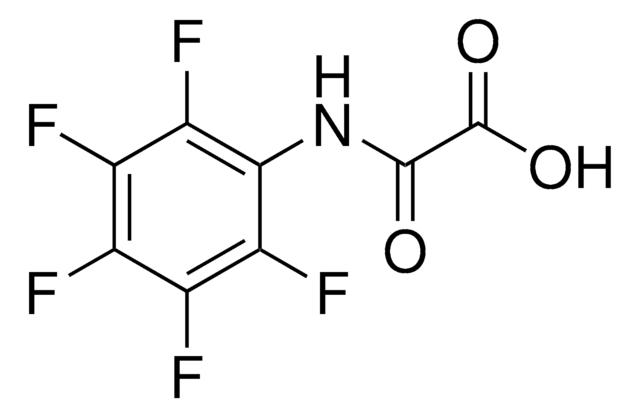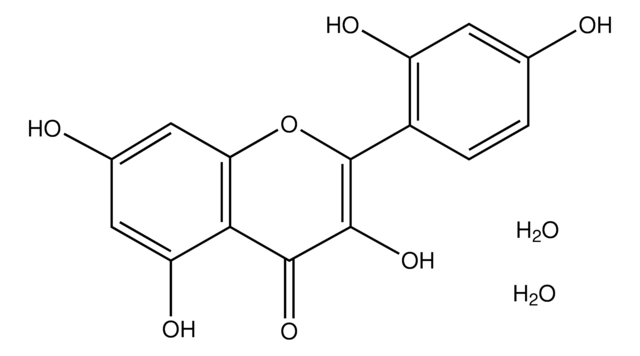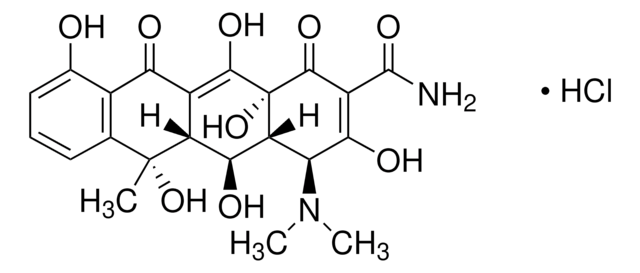21-0180
1-Naphthol
SAJ special grade, ≥99.0%
Sinónimos:
α-Naphthol, 1-Hydroxynaphthalene
About This Item
Productos recomendados
grado
SAJ special grade
densidad de vapor
4.5 (120 °C, vs air)
presión de vapor
1 mmHg ( 94 °C)
Análisis
≥99.0%
formulario
solid
temp. de autoignición
1007 °F
lim. expl.
5 %
disponibilidad
available only in Japan
bp
278-280 °C (lit.)
mp
94-96 °C (lit.)
cadena SMILES
Oc1cccc2ccccc12
InChI
1S/C10H8O/c11-10-7-3-5-8-4-1-2-6-9(8)10/h1-7,11H
Clave InChI
KJCVRFUGPWSIIH-UHFFFAOYSA-N
¿Está buscando productos similares? Visita Guía de comparación de productos
Palabra de señalización
Danger
Frases de peligro
Consejos de prudencia
Clasificaciones de peligro
Acute Tox. 3 Dermal - Acute Tox. 4 Oral - Aquatic Acute 1 - Aquatic Chronic 3 - Eye Dam. 1 - Skin Irrit. 2 - Skin Sens. 1A - STOT SE 2 Oral - STOT SE 3
Órganos de actuación
Kidney, Respiratory system
Código de clase de almacenamiento
6.1C - Combustible acute toxic Cat.3 / toxic compounds or compounds which causing chronic effects
Clase de riesgo para el agua (WGK)
WGK 1
Punto de inflamabilidad (°F)
257.0 °F - closed cup
Punto de inflamabilidad (°C)
125 °C - closed cup
Equipo de protección personal
dust mask type N95 (US), Eyeshields, Faceshields, Gloves, type P3 (EN 143) respirator cartridges
Certificados de análisis (COA)
Busque Certificados de análisis (COA) introduciendo el número de lote del producto. Los números de lote se encuentran en la etiqueta del producto después de las palabras «Lot» o «Batch»
¿Ya tiene este producto?
Encuentre la documentación para los productos que ha comprado recientemente en la Biblioteca de documentos.
Nuestro equipo de científicos tiene experiencia en todas las áreas de investigación: Ciencias de la vida, Ciencia de los materiales, Síntesis química, Cromatografía, Analítica y muchas otras.
Póngase en contacto con el Servicio técnico












